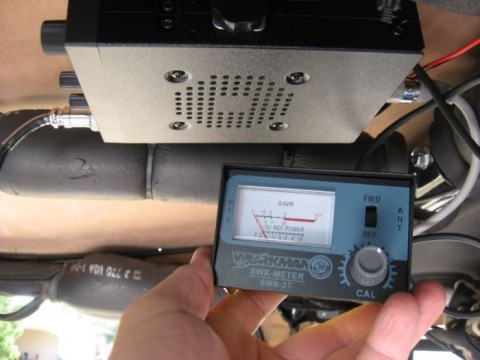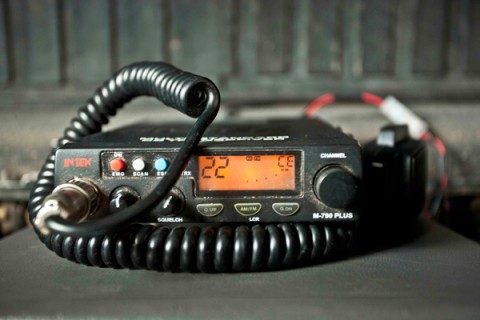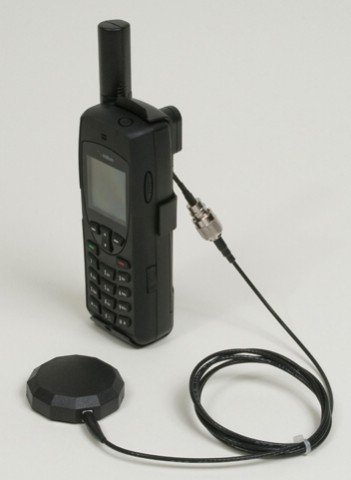Electronic Myths
For years, I had very little interaction with the electronic aspects in cars on off road tracks. The Land Rover I use had very simple systems, with only a ECU that managed piston synchronization, the electronic injection and a few other things. No ABS, no traction control or any of the newer things. And it did everything just as it should, perfectly.

But the day has come when my beloved Defender has to be replaced by something newer and better. Because the Defender has successfully doubled as a spacious day-to-day vehicle as well as a very able off roader, it became quite clear that this is the upper limit of any vehicle that can perform both tasks great. So it is with this in mind that I set out to replace it with a vehicle with increased comfort but decreased off road abilities. I’ve searched a number of vehicles, 2005 onwards and repeatedly stumbled onto problems linked to the electronics side of the car. The new 4x4s and SUVs have a far superior build quality in terms of hardware problems but more than make up for it with bugs in the electronics department.
Having electronics and sensors on an off road vehicle means a smooth ride. Traction control, hill descent control, and pretty much any kind of control available to your four wheels for any kind of terrain. Having all this information from the environment for your car to adapt to means that you need a relatively powerful and efficient computer to process it, as well as a range of devices to adapt its settings to the type of driving necessary. We are all used to ABS, ASR and SRS systems, available for smaller vehicles as well as 4x4s. These simple systems, were some of the first to require calculations and response to external stimuli by the vehicle’s systems. Along time, more complex functions have become attached to the ECU. We will now try to look at some of the most advanced ones and see how they work and, more importantly, how they can backfire.

One of the most interesting adaptations to an off road vehicle is the height control. After reading this, many would probably say that anything with adjustable height is not really an off road car. But the thing is, when we think “proper off road” we are used to think challenges, rock crawls and so on - extreme sports. An off road car can be used for a large array of tasks, including expeditions. When you go on an expedition, you travel extremely long distances and so you need comfort. The adjustable height stands to gain an important advantage here, since you can cruise at high speeds on the highway with the car lowered for fuel efficiency while still being able to operate at a considerable height off the beaten track.
This function of the suspension system, although very useful, is not without faults - of all the problems a car can have, no suspension at all is probably amongst the top contenders for worst problem. One of the most common models to have this problem is the Range Rover P38. Along time, the this car has had an array of serious issues concerning this system – mainly because it was one of the first to implement it in such a fashion. The problem, which was corrected in later models, was that the truck relied almost exclusively on this lifting system for suspension. If the air pump insuring the pressure in the system would fail, as it’s done on a number of occasions, the truck’s body would simply lower down on the remaining empty air bags.
First implemented on the legendary Citroen car, the height control system is now available in a relatively large number of SUVs, including the new Toyota Land Cruisers, Volkswagen Tuaregs and so on. The comfort and utility it offered on the pavement has made it an important option for most car manufacturers and thus increased research in the matter, solving most of its problems. However, the unreliability of the Range Rover P38 model meant that this suspension system would be regarded with quite a lot of skepticism for a good long while.

The Three Amigos, also a problem signaled in the Land Rover area. At one point or the other, the ABS, HDC (Hill Descent Control) and TC (Traction Control) lights go on at the same time. This error has had recurrences at an entire series and is apparently linked to the ABS modulator, which ceases to function The result of this is that your ABS stops working and, along with it, the TC and HDS. Combined, all three functions insure a safe and smooth ride up and down steep hills, along with reliable breaking when needed. On the other hand, this can be prevented and the solution is pretty simple. When you have a car that has a large number of functions, especially for off road use, it simply needs to go off the road. These upgrades in the cars, like muscles in the human body, need to be exercised. If not, hoses clog up, valves get stuck and anything else that can wear out, does. So, be it a Land Rover or not, if you do buy a car with comfort and safety functions for off road use, be sure to take it off the road every now and again so it can literally stretch its legs and exercise these functions in order to keep them in order for when they’re really needed.
I think we’ve bashed Land Rovers quite enough so let’s pass on to other examples.
Jeep has had a certain issue with its traction control system and electronic locking differentials that has been signaled on a number of occasions. The system works well and has a sound logic to it: when a wheel loses grip and starts spinning, traction is applied to all other wheels that do not spin while also applying the break on that particular wheel. Along with this, the computer also reduces engine power if needed in an attempt to eliminate wheel spin. In theory, it’s an ideal combo. But, as we’ve found out in practice, the perfect theory tends to be a bit rough around the edges. When the truck gets stuck in sand, mud, snow, wheel spin is essential to preserve your momentum and avoid getting stuck. But, if the system kicks in (knowing that it locks a wheel after a 1/8 spin of the wheel), after having more than one wheel spin and the process repeated for each case, the driver may find himself going nowhere fast. Although this is not really an electronic problem (the ESP which incorporates the TC can be switched on or off), this is a case where electronics, although initially thought to increase reliability, actually get in the way of efficient driving. Initially, the system was thought up for high speed driving when the car hit gravel or some other form of slippery surface, so as to insure it’s stability.
Emergency Mode. This problem is generally encountered on new and, more often than not, expensive models with all sorts of electronic sensors. While driving along, usually on paved road, the car suddenly goes haywire. In most cases due to a faulty sensor or connection, rather than a real live problem, it starts running as if a major problem has occurred. With the pedal all the way down, it will only go 25-30 kilometers an hour while also exhibiting an entire Christmas tree light ensemble on the dashboard. This mode, although fairly annoying when kicking in at the wrong times, has been implemented in order to protect you as well as the vehicle in case of an event which leaves the car in an impossibility to function within its factory parameters. Of all the problems that electronics raise, this has to be one of the most commonly seen in modern vehicles.
Water. This one is pretty basic. Up until the last decade or so, trucks have been fairly simple and straightforward. A basic diesel engine with a snorkel would easily withstand river crossings, dusty outbacks and so on. Newer models tend to rely on the truck’s computer to synchronize injection, lubricate the system and many other tasks. Although they are thought up to adapt to water conditions, it’s only logical to assume that nothing is literally watertight and that any liquids slipping into the computer area will most likely disrupt important processes that literally keep it going. In the older days, when mechanics was the number one issue, the engine was taken apart, dried, cleaned, lubricated and started once again, if water managed to creep inside. Today’s engines have superior build quality but have an increased vulnerability with regards to the computer side, that manages the system. More than once have I had the chance to see newer cars in competitions, in Open Class, having to abandon due to water in the electronics.
Examples can go on and particular cases can be analyzed as much as possible - very little conclusions will be drawn. Electronics in vehicles have had the role of increasing comfort in rides and offer assistance off the asphalt. Considering that these new models stray from the idea of the heavy duty off road vehicle, it’s only natural that the car manufacturers would not concentrate that much on the extreme side of things but rather for light traveling on dirt roads, forest tracks and green laning. The comfort aspect of the newer models prompted manufacturers to change the build technique, opting for independent front suspension or even full independent, thus further lowering the vehicle’s off road abilities by decreasing wheel travel. There are very many pluses and minuses for having a new 4x4, with a large range of electronic functions for on and off the road usage but, as we’ve all figured out until now, there cannot possibly be any vehicle that is perfect for all uses. If you’re planning to attack deep mud, go bogging all over the place and drive difficult tracks, a new model truck will most likely not rise up to the challenge. However, for those whose aims are to visit places, travel long distances in comfort and use their car as an expedition carrier with light off road sections, the new and improved models are the things to choose.

CB Radio For Off-Roaders The Off-Roaders guide to choosing a CB radio - While not as commonplace as it was in the 70's, CB radios are still widely used by off-roaders as a primary source of communication.

Offroad Communications - CB Radio - A lot of the times, while preparing a car for challenges or expedition, we tend to focus on the cars more than on the adjacent issues. But, since some are more important than others, the issue of communications in the car, between cars and with third parties came up in a discussion a few days ago.

Offroad Communications - Satellite Phones - Deep jungle. Rain. Broken differential. Truck stuck in the mud. No phone signal and nothing on the CB stations. Although this situation is not something most people would even consider ever being in, theres some of us who seem to think "This might happen to me". Of course, theres some other people who will smile and say "Oh! This has happened to me plenty!"